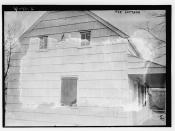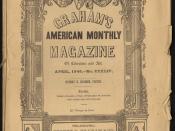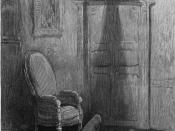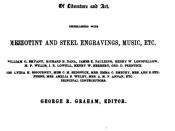After the much acclaimed success of his poem, The Raven, Edgar Allen Poe published an essay in Graham's Magazine in 1846 called the Philosophy of Composition. This work was a lecture on the thought processes involved in his creating of The Raven. Some would believe that the work itself was conceived after the fact and that it is not an accurate account of his procedures. However, if this essay is truly a schematic view of his poem, then it is the first time in American Literature that an author has revealed to the public what goes on behind the scenes when a work of literary art is formulated. This work may have indeed influenced the standard by which today's Literary Canon is adjudicated.
All his life Poe had pushed for the systematic and deliberate construction of art rather than the "uncontrolled effusions (1572)"ÃÂ of spontaneous authors. Poe's style is like a mathematical equation; he has calculated everything from the type of animal to utter his melancholy word "Nevermore"ÃÂ to the amount of lines his poem is to have, all with exact precision before a single line is printed.
Today; when we examine Classical Literature and Early American Literature; do we not look for rhyme scheme, literary devices like assonance and consonance, foreshadowing, irony, paradox, and other technical implements to decide what is a work of talent and what is a work of trite? Indeed, by examining all of the works in our text, we can see that all the works considered educational and part of Canon are almost all works of deliberate artistry. Poe and his contemporaries it would seem have won the paradigm war and made art of random creative ejaculation a thing unrespected, and for the most part, untaught. It is for these reasons that the revolutionary publishing of The Philosophy of Composition is a milestone in American Literature.





